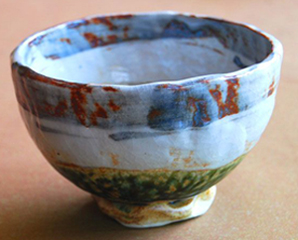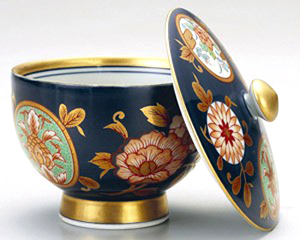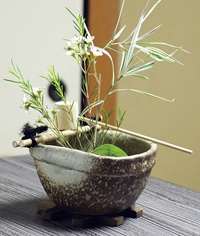Earthenware - Japanese Traditional Culture | Difference Between Pottery and Porcelain
Difference Between Pottery and Porcelain


Porcelain and pottery differ mostly in their clay body composition. Pottery has an ancient history predating porcelain; it was first used by humans 33,000 years ago in China. Many early cultures the world over fashioned pots from clay they found in their locality. Porcelain is also known as China because this is the country of its origin. The Chinese people first made high firing kilns around 100 AD and made porcelain. They developed celedon green glazes and started to use the potter's wheel about 200 AD. Europeans did not begin to produce porcelain wares until 1400 and then only for nobility. Both porcelain and pottery wares are basically produced using the same methods of forming, firing, glazing and refiring.
Color
Porcelain is formed from kaolin and feldspar rock and is white throughout its body. Earthenware and stoneware are both types of pottery with various colored clay bodies that range from brown to red and include grays.
Translucence
Porcelain is usually made thinner than pottery wares; when you hold a piece of porcelain up to a light, you should be able to see light shine through the porcelain body. You may need to look at the edge of the piece where it is thinnest to see this effect. Pottery is usually thicker and is opaque throughout its form.
Density
Porcelain is often thin enough to produce a clear ringing sound when lightly tapped with a fingernail. Pottery creates a dull sound when tapped. Even the unglazed rim on the bottom of a piece of porcelain will not scratch; this is not true of pottery.
Texture
Pottery is usually made thicker without extreme smoothness. Because pottery is more porous, it often has a grainy texture. Porcelain has a smooth fracture and is more glassy. It is made to a higher degree of refinement regarding smooth perfection.
Firing
Earthenware pottery is fired from 1,800 to 2,100 degrees F. Porcelain wares are fired to an even higher temperature of 2,200 to 2,600 degrees. This causes the porcelain to be denser and the pottery to retain more porosity.
Copyright© Earthenware All Rights Reserved.
